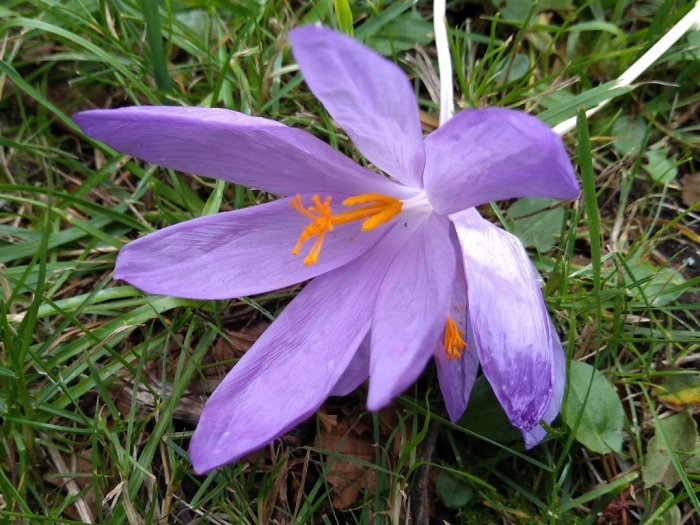Autumn Crocus
(Crocus nudiflorus)
Autumn Crocus (Crocus nudiflorus)
/
/

Karen Fry
CC BY 4.0
Image By:
Karen Fry
Recorded By:
Copyright:
CC BY 4.0
Copyright Notice:
Photo by: Karen Fry | License Type: CC BY 4.0 | License URL: http://creativecommons.org/licenses/by/4.0/ | Rights Holder: Karen Fry | Publisher: iNaturalist | Date Created: 2021-10-07T15:54:52-07:00 |

























Estimated Native Range
Summary
Crocus nudiflorus, commonly known as Autumn Crocus, is a perennial herb that is native to mountain meadows and woodland clearings in southwestern France and northern Spain. It has naturalized in parts of Great Britain. This small plant typically grows to 3-4 inches (8-10 cm) in height and produces deep purple to lilac-purple flowers with a paler throat and bright orange or yellow stigmas. The flowering season is in autumn, and the blooms are quite showy, making it a point of interest in the garden during a season when few other plants are in flower. The narrow, grass-like leaves with a distinctive silvery central stripe emerge after flowering and persist through winter and into spring.
Crocus nudiflorus is valued for its autumn blooms and is often used in rock gardens, borders, and naturalized areas. It prefers well-drained soil and full sun to partial shade. The plant is relatively low maintenance and is generally not prone to serious pest or disease problems. However, it can be susceptible to corm rot if planted in overly wet conditions. In cultivation, it is important to protect it from wild animals such as boars, which may dig up and eat the corms. While it has been used in folk medicine, it should be noted that parts of the plant are toxic if ingested.CC BY-SA 4.0
Crocus nudiflorus is valued for its autumn blooms and is often used in rock gardens, borders, and naturalized areas. It prefers well-drained soil and full sun to partial shade. The plant is relatively low maintenance and is generally not prone to serious pest or disease problems. However, it can be susceptible to corm rot if planted in overly wet conditions. In cultivation, it is important to protect it from wild animals such as boars, which may dig up and eat the corms. While it has been used in folk medicine, it should be noted that parts of the plant are toxic if ingested.CC BY-SA 4.0
Plant Description
- Plant Type: Herb
- Height: 0.2-0.3 feet
- Width: 0.1-0.2 feet
- Growth Rate: Moderate
- Flower Color: Purple, White
- Flowering Season: Fall
- Leaf Retention: Deciduous
Growth Requirements
- Sun: Full Sun, Part Shade
- Water: Medium
- Drainage: Medium, Fast
Common Uses
Bee Garden, Border Plant, Low Maintenance, Rock Garden
Natural Habitat
Native to mountain meadows and woodland clearings in southwestern France and northern Spain
Other Names
Common Names: Naked Crocus
Scientific Names: , Crocus nudiflorus, Crocus aphyllus, Crocus fimbriatus, Crocus hybernus var. pyrenaeus, Crocus medius, Crocus multifidus, Crocus multifidus, Crocus pyrenaeus, Crocus speciosus,
GBIF Accepted Name: